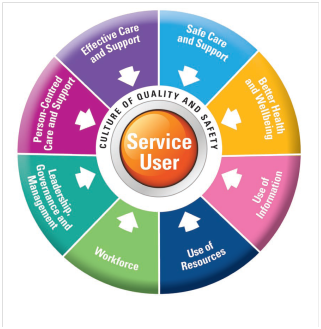Patient Safety and Quality
Infection Prevention & Control
Hospital Hygiene
Ensuring that our wards and all parts of the hospital are kept clean is vital to preventing the spread of infections and is something we take very seriously.
- Our household staff ensure standards of cleanliness are maintained and monitored across all areas of the hospital.
- There are cleaning schedules and checklists in all rooms, wards, bathrooms and toilets, which include the contact details of who should be contacted if more cleaning is needed.
- Supervisors inspect all clinical areas on a daily basis and undertake regular audits to ensure that cleanliness is maintained at a very high standard.
- Members of the senior management team also undertake regular walkabouts to assess the cleanliness of the environment and patient equipment and upkeep of the facilities.
- Any areas for action identified are immediately acted upon.
Hand hygiene
Hand Hygiene is very important in the prevention of infection as clean hands reduce the risk of spreading germs and infections.
- Germs that naturally live on a person’s skin and normally cause few problems may be more serious when brought into hospital.
- These germs are often passed from one person to another by physical contact, so it is important that patients, visitors and healthcare workers reduce the risk of spreading infection by regularly cleaning their hands.
- Please never feel uncomfortable about asking anyone – hospital staff, visitors, family or friends to wash their hands or to use a hand gel before coming in contact with you or your surroundings.
- There are disinfecting hand gels throughout the hospital and at each bedside.

How to use the hand gel
If your hands are visibly dirty, you should wash and dry them before applying the gel.
- Place a small amount of the gel in the centre of your hands
- Rub around all surfaces, paying particular attention to the finger tips
- Once the gel is dry, your hands are clean and disinfected
How patients and visitors can help prevent the spread of infection
There are certain things which you as a patient can do to minimise the risk of spreading infection. These include:
- Clean your hands before eating and before leaving your room/bed area
- Wash hands after using the toilet and before touching any wound
- Clean your hands before and after touching any blood
- Ask friends and family who have colds, stomach bugs or other infections not to visit
- Encourage your visitors to clean their hands immediately before and after they enter and leave your bedside
- Avoid sitting on another patient’s bed
- Ask your visitors not to sit on your bed
How hospital staff can help prevent the spread of infection
All hospital staff must clean their hands according to the World Health Organisation’s ‘5 Moments for Hand Hygiene’:
- before touching a patient;
- before clean/aseptic procedure;
- after body fluid exposure risk;
- after touching a patient; and
- after touching patient surroundings.
Audit and surveillance
The infection prevention and control midwives carry out audits throughout the hospital. These include:
- Staff compliance with the ‘5 Moments for Hand Hygiene’ and correct hand washing technique
- Targeted audit of practice in relation to isolation precautions and care of IV sites
- Targeted environmental audit and swabbing during the investigation into an increase in infection rates and during outbreaks
- Infection control practices and facilities in all ward areas such as overall layout, cleaning regimes, equipment and hand washing facilities
Surveillance of hospital acquired infections is carried out on a hospital wide basis including the following:
- Surgical site (wound) infections
- Positive blood cultures to identify if the infection is related to their stay in hospital
- Multi-resistant organisms such as MRSA
- Antimicrobial stewardship to ensure appropriate use of antibiotics
Participation in Quality Initiatives
The Rotunda Hospital is committed to providing high quality, safe and reliable care to all mothers and babies. We take part in a number of quality initiatives both at national and international level.
The following examples show our commitment to improving the care and services we provide.
Baby Friendly Hospital Initiative
The Rotunda was redesignated as a Baby Friendly Hospital during 2012, recognising that implementing best practice in maternity services is crucial to the success of programmes promoting breastfeeding.
Implementation of the Ten Steps to Successful Breastfeeding ensures that the hospital supports and promotes informed parental choice through the provision of appropriate, accurate, unbiased information and discussion with women and their partners.
The Rotunda maintained baby friendly status since becoming the first Dublin maternity hospital to achieve the award in 2006.
For further information on baby friendly please follow the link:
www.ihph.ie/babyfriendlyinitiative
Laboratory Accreditation
High quality laboratory services are an integral component of the provision of safe care to patients.
The Department of Laboratory Medicine operates a full quality management system that complies with the following international standards:
ISO 15189 Medical Laboratories — Particular requirements for quality and competence
ISO 22870 Point of Care — Requirements for quality and competence
For further information and for a full scope of our accreditation please follow the link: Click Here
Vermont Oxford Network (VON)
The neonatal unit participates in the VON, which is an international collaboration of over 800 neonatal units worldwide.
The information obtained from the database allows us to benchmark and compare our care of infants born <1500 grams on a national and international level.
The Rotunda compares favourably to the VON across most markers of neonatal care.
National Standards
Over the past number of years, the Health Information and Quality Authority (HIQA) and the Health Service Executive (HSE) have launched national standards for hospitals.
Examples include the infection prevention and control standards and healthcare records standards. We assess how well we comply with the standards and identify any areas for improvement.
The national standards for safer better healthcare were launched in June 2012. They aim to protect patients and to improve services. The standards are a first step towards a licensing system for the Irish healthcare system. During 2013 all hospitals must review and rate their performance against the standards. We will develop plans to close any gaps we identify during this review. The standards are grouped under eight themes, which are presented in the diagram below.


